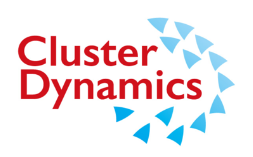PhD in robotics & Research assistant
Subject: Exploring different means of human-robot interactions by using environmental data to adapt the robot's behaviours.
My PhD mainly focused on the improvement of Human-robot interactions. I achieved it with three projects:
- The first one used the Nextage open robot from Kawada Robotics and was used during IREX 2019. The goal was to evaluate how participants will interact with a robot not made for social interactions and to do a project where the participants could interact with the robot without any prior training. The project involved some AI algorithms to catch participants' emotions, and gaze or to detect some objects. See more detail in the following article.
- The second project was the creation of a robot from scratch called Yokobo. The creation of this robot involved a team of designers and engineers from France and Japan, as a partnership with Orange. The goal was to help young retired people in their daily life, involving a new paradigm: human-robot-human interaction. Yokobo can be used to transmit messages between two people, acting as a middleman. I was involved in the electronic design of the product, and the software part by managing the sensor part. I was also involved in the main algorithm. Most of them are in Python. See more detail in the following article.
- As a side project to Yokobo, I also developed a smartphone application for Android to configure the Raspberry Pis used in the robot. The goal of Yokobo is to be used in people's homes with ease, and during the experiment, it has to be changed several times. The normal way to connect the RPi to the home's WiFi network is to use a keyboard, a mouse and a screen; or to write directly on the µSD card. Then I developed an application to connect to the RPi via Bluetooth with the smartphone to enter the WiFi credentials. It is also used to configure the weather station from Netatmo that Yokobo is using. An article will be presented at the ICCCR conference in Shangai the 24-26 March 2023.
- Finally, to improve the interactions of Yokobo in a long term, I developed a specific algorithm called BeWoDa (BEhaviours from WOrld DAta). The algorithm is built in two parts. First, a Naïve Bayesian Network symbolises the representation of the world by Yokobo and the link between all the input parameters. Then 2 Reinforcement Learning algorithms to control the motors and the light of Yokobo. Over time Yokobo will learn the action it has to do to keep the user in a good mood (as a first naive approach). The current algorithm has been tested in simulation and will be tested with the real robot in an experiment in a couple of months.
During my PhD, I had to achieve a special research project. I decided to do it on autonomous vehicles since transportation is another field I have an interest. We can consider autonomous cars as big wheeled-robot. I achieved a survey on the way to estimate the intention of pedestrians or cyclists; for example, if they want to cross the road or not. See more detail in the following article.

 French (native)
French (native) English (TOEIC: 960)
English (TOEIC: 960) Japanese (JLPT N4)
Japanese (JLPT N4) German (basic knowledge)
German (basic knowledge)

